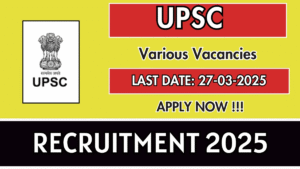Taming the Digital Tide: Mastering the Inbox for Peak Productivity
In the contemporary professional landscape, the inbox has evolved from a simple communication tool to a battleground, a daily deluge of messages demanding attention and action. Mastering the inbox, therefore, is not merely a matter of tidiness; it’s a crucial skill for productivity, stress management, and overall professional efficacy. Effective email management techniques are essential for navigating this digital torrent, ensuring that crucial information is not lost and that time is not squandered in the endless scroll.

Building a Foundation: Structured Organization
The first step towards inbox mastery lies in establishing a structured approach. This begins with the implementation of a robust filing system. Creating folders based on project, client, or sender allows for quick retrieval of information and prevents the inbox from becoming an unmanageable repository of unsorted messages. Utilizing email filters to automatically categorize incoming mail can further streamline this process, directing specific messages to designated folders, thereby reducing the mental load of manual sorting. Automation, where appropriate, can be a time-saver.
Disciplined Habits: The Proactive Approach
Beyond organization, efficient email handling requires disciplined habits. The “zero inbox” philosophy, while ambitious, promotes a proactive approach, advocating for immediate action on each email. This might involve replying, delegating, archiving, or deleting, but the goal is to prevent messages from languishing in the inbox. Quick responses, when possible, demonstrate professionalism and efficiency, fostering positive communication. Setting aside specific times for email processing, rather than constantly reacting to notifications, can also improve focus and reduce interruptions.
Clear Communication: Concise and Professional Exchange
Effective communication within emails is equally important. Clear, concise, and professional language can prevent misunderstandings and reduce the need for lengthy back-and-forth exchanges. Utilizing subject lines that accurately reflect the email’s content allows recipients to prioritize messages and understand their purpose at a glance. Bullet points and numbered lists can break up lengthy text, making emails easier to digest. Furthermore, avoiding unnecessary attachments and utilizing cloud-based file sharing services can streamline communication and conserve storage space.
Strategic Prioritization: The Four Ds Framework
Another critical aspect of inbox mastery is the ability to prioritize. Not all emails are created equal, and discerning between urgent and non-urgent messages is essential. The “four Ds” – do, delegate, defer, or delete – provide a useful framework for decision-making. Urgent tasks should be addressed immediately, while less critical messages can be scheduled for later. Knowing when to unsubscribe from irrelevant newsletters and promotional emails can significantly reduce inbox clutter.
Setting Boundaries: Maintaining a Healthy Relationship with Email
Finally, maintaining a healthy relationship with email requires setting boundaries. Constant connectivity can lead to burnout and diminish productivity. Disabling non-essential notifications and establishing clear communication guidelines with colleagues can help manage expectations and prevent email from encroaching on personal time. Utilizing features like scheduled send can help to write an email when it is convenient, but send it when it is most appropriate.
Transforming the Inbox from Burden to Asset
In conclusion, mastering the inbox is an ongoing process that requires a combination of organizational skills, disciplined habits, and effective communication strategies. By implementing these techniques, individuals can transform their inboxes from sources of stress into tools for productivity and professional success. In a world increasingly reliant on digital communication, the ability to effectively manage email is not just a skill; it’s a necessity.




















